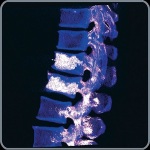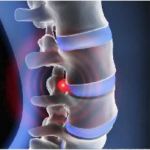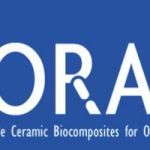Bioceramic composite materials have for many years been considered to show great promise in the repair of musculoskeletal defects. The materials can mimic the structure of bone, and devices made from the materials can be structured to closely match the mechanical requirements of implant sites. In addition, wide ranges of bioactivity are possible, from inert to fully resorbable.
Bioceramics have most commonly been used to date in dentistry, and in some orthopaedic applications, e.g. as an injectable paste for vertebroplasty, or as a coating material for metal orthopaedic implants. However, advances in cellular medicine bring great opportunity for significant growth in the bioceramics industry – bioceramics and bioceramic composites offer levels of bioactivity which far exceed those available from metal implants, together with combinations of strength and modulus, which exceed anything which can be offered by bioactive polymers on their own.
A European research project called RESTORATION develops resorbable bioceramic composite materials for three main applications: Osteoarthritis, Vertebroplasty (VP) and Kyphoplasty (KP), and Maxillofacial Fracture Fixation. The bioceramic cement used for the composite materials offers new biological, mechanical and rheological properties
The three applications of RESTORATION include (1) Osteoarthritis: develop functionally gradient bioceramic composite plugs for osteochondral applications, (2) Vertebroplasty and Kyphoplasty: develop a new generation of vertebral cements with appropriate biological, mechanical and rheological properties. (3) Maxillofacial Fracture Fixation: develop new bioceramic composites that posse sufficient stiffness and strength to protect and support the broken bone.
Regarding the research activities, the project partners developed injectable cement and composite materials and characterised them in terms of their properties, injectability and radiopacity. They were then taken forward to be further developed towards medical devices.
Furthermore, seven brand new bioceramic formulations with improved combinations of mechanical and biological properties were developed. This led to new ceramic and ceramic-polymer composite structures capable of being implanted using minimally invasive surgical techniques, along with evaluation of in-hospital processing routes for the implantable materials.
In parallel, a biological enhancement and assessment was performed for the novel biomaterials. It comprises cell culture (human and rat primary fibroblasts, osteoblasts, adult stem cells) in the presence of the biomaterial in vitro in order to understand basic cell-compatibility and cell-biocomposite interaction.
Last, an environmental and economic assessment of the three types of devices has been performed. It was compared to the different current alternatives, based on Life Cycle Assessment (LCA) and Life Cycle Costing (LCC) methodologies. LCA and LCC allow quantifying the potential environmental and economic impacts of the devices during all their life cycle including design (concept, prototype, and pre-clinical), materials, manufacturing of devices, clinical assays, surgical and post-surgical stages, and end-of-life.
For more information, visit www.restoration-project.eu

















